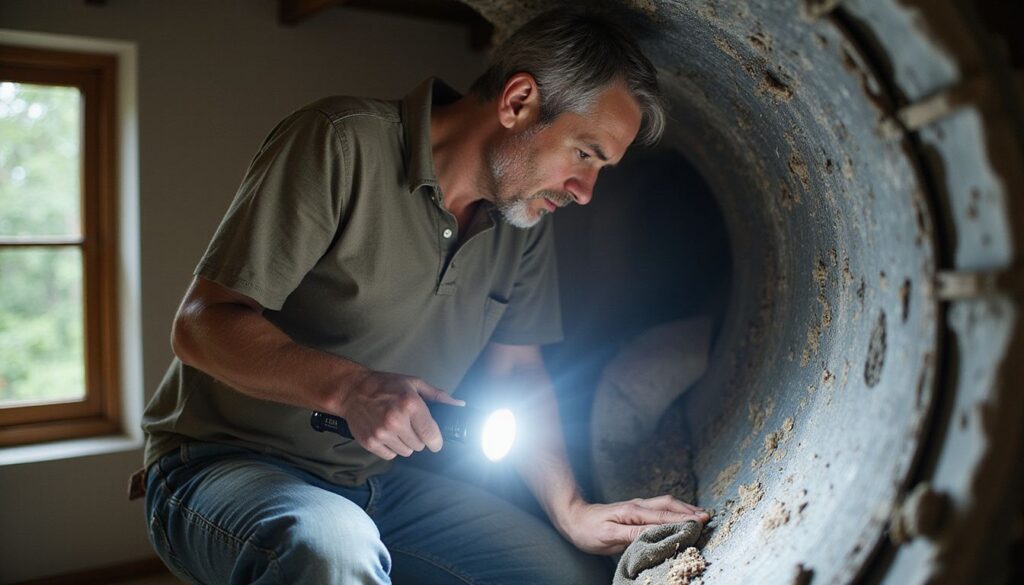Solved: Do You Need to Clean Ducts Before Aeroseal?

Many homeowners believe Aeroseal duct sealing solves all dust and debris problems. However, sealing dirty ducts can undermine the entire process. Cleaning ducts first ensures optimal sealant adhesion and cleaner, healthier indoor air.
As an HVAC professional with over a decade of experience, I’ve seen firsthand the importance of adequately preparing air ducts for aeroseal applications. This article will explore why thorough duct cleaning matters and how it benefits your HVAC system and indoor environment.
Why Cleaning Ducts Before Aeroseal Matters
Aeroseal uses a non-toxic, vinyl acetate polymer sealant (with an odor similar to Elmer’s glue) to close gaps from the inside of your ductwork. A clean surface is important for this sealant to adhere effectively and achieve optimal performance.
Ensuring Effective Sealant Adhesion
Dirty ducts reduce the sealant’s ability to bond, limiting Aeroseal’s effectiveness. According to the Lawrence Berkeley National Laboratory, Aeroseal adheres best to clean surfaces free of dust and debris.
Preventing Indoor Air Pollution
Dust, mold spores, and other contaminants inside your ductwork can circulate into your home’s conditioned spaces if it is not sealed and cleaned. The EPA recommends duct cleaning to remove buildup and maintain healthy indoor air quality before sealing.
Optimizing HVAC Efficiency
Dirt accumulation restricts airflow, causing your HVAC system to work harder and less efficiently. Clean ducts allow Aeroseal to form a strong seal, improving airflow and reducing energy consumption.

Assessing Your Ducts Before Aeroseal
Before scheduling an Aeroseal procedure, professional HVAC technicians should assess the cleanliness of your ducts:
Visual Inspection: Technicians check ducts for thick dust, debris, or mold layers.
Debris Level Evaluation: High dust levels indicate the necessity for duct cleaning.
Air Quality Check: Assess indoor air quality to determine if pollutants from the ducts affect living spaces.
When to Consider Cleaning (Table)
| Condition | Recommended Action |
|---|---|
| Minor Dust | No immediate action required |
| Moderate Dust Build-Up | Recommended cleaning before Aeroseal |
| Heavy Dust/Mold Presence | Mandatory cleaning before Aeroseal |
Benefits of Cleaning Ducts Before Aeroseal
Improved HVAC Performance
Removing dust buildup significantly boosts airflow and helps your HVAC system operate more efficiently, leading to lower energy costs and prolonged equipment life.
Enhanced Indoor Air Quality
Clean ducts reduce indoor pollutants, decreasing allergens, mold, and dust circulation. Aeroseal then effectively seals your clean ducts, ensuring better air quality.
Long-Term Savings
Ensuring a clean environment before sealing improves the Aeroseal bond, optimizing the sealant’s lifespan and minimizing future HVAC maintenance costs.
Steps for Effective Duct Cleaning and Aeroseal Process
Inspection: HVAC professionals conduct a detailed inspection.
Cleaning: Removal of debris, dust, and contaminants.
Sealant Application: Aeroseal is applied effectively to clean ducts.
Post-Inspection: Verify proper sealing and airflow improvements.
Conclusion
Cleaning ducts before applying Aeroseal is essential. It improves sealant effectiveness, reduces indoor air pollution, and optimizes your HVAC system’s performance. Consult with professional HVAC technicians to determine if your ducts need cleaning before Aeroseal sealing, ensuring your home’s air remains clean, safe, and efficient.


